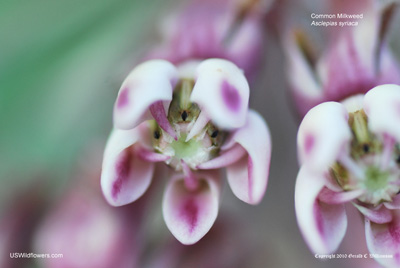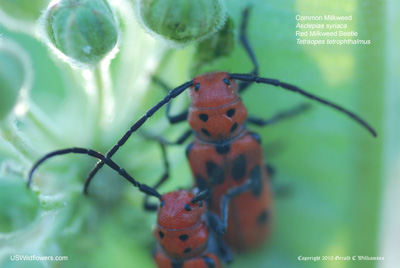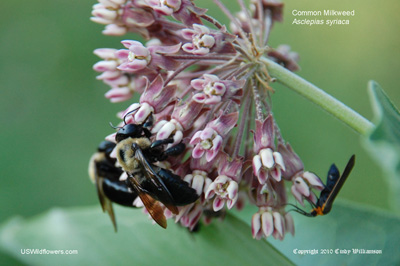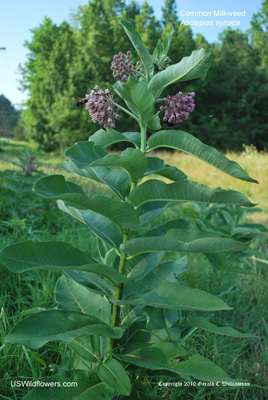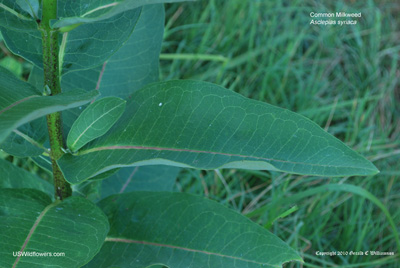Wildflowers of the United States | |||||||||||||||||||||||||||||||||||||||||||||||||
| |||||||||||||||||||||||||||||||||||||||||||||||||
Asclepias syriaca - Common Milkweed, Silkweed. This native milkweed is found in 38 of our 50 states and in much of Canada. It is listed in several weedy or invasive lists, so consider the impact on your area before propagation. In my opinion, it should be allowed to grow unles there is an overriding reason to destroy a plant's population, since milkweed is an important part of the ecosystem, providing food and habitat for many insects. | The milky white, sticky sap is reported to be toxic, but with appropriate preparation, several parts of the plant are reported to be edible, according to Wildflowers Of Tennessee, The Ohio Valley and the Southern Appalachians Journal Articles Referencing Milkweed Leave comments on Asclepias syriaca at this link. Check here for more information about Asclepias syriaca.   Blue=Native; Grey=Introduced Map from USDA Plants Database: USDA, NRCS. 2017. The PLANTS Database (http://plants.usda.gov, 16 Jan 2025). National Plant Data Team, Greensboro, NC 27401-4901 USA. Search Our Database: Enter any portion of the Scientific, Common Name, or both. Do a general Google search of the entire site: #ad #ad
| #ad
| | ||||||||||||||||||||||||||||||||||||||||||||||
|
Commercial / Cookie Notice Looking for Wildflowers for a specific state? Check here: | |||||||||||||||||||||||||||||||||||||||||||||||||
|
| |||||||||||||||||||||||||||||||||||||||||||||||||


